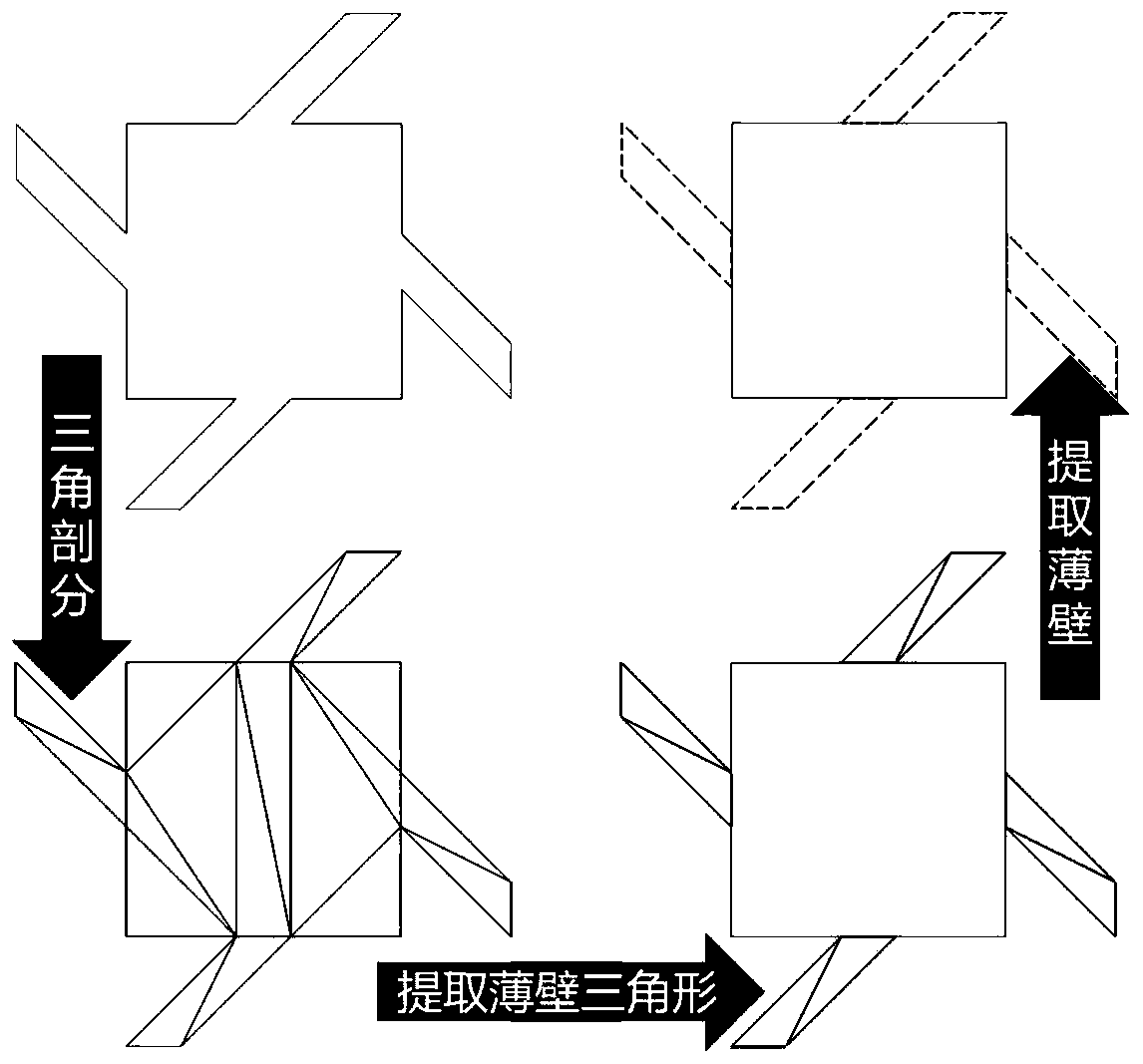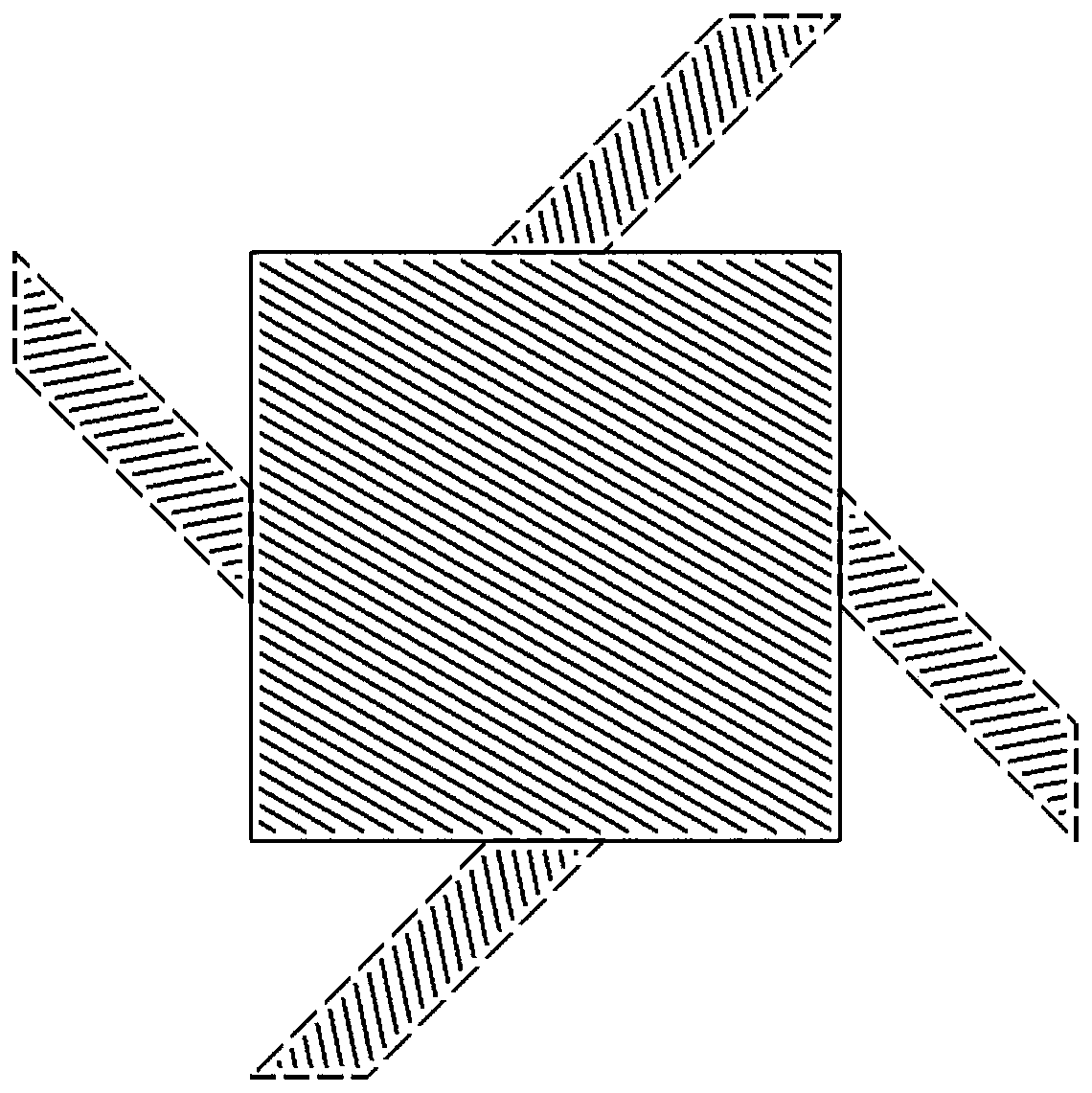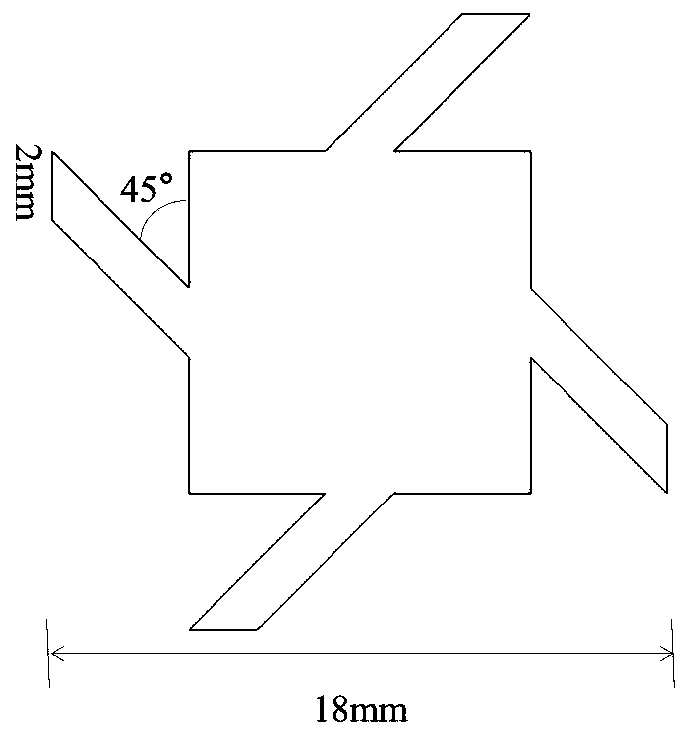Laser additive manufacturing process path planning method based on thin-wall feature recognition
A technology of laser additive and manufacturing process, which is applied in the field of metal additive manufacturing, can solve problems such as single and difficult to guarantee the final forming quality of parts, and achieve the effect of ensuring forming quality and avoiding heat accumulation
- Summary
- Abstract
- Description
- Claims
- Application Information
AI Technical Summary
Problems solved by technology
Method used
Image
Examples
Embodiment Construction
[0021] combine Figure 1 to Figure 3 , a laser additive manufacturing process path planning method based on thin-walled feature recognition, including the following steps:
[0022] Step 1, input the 3D model of the part and perform slice processing to obtain all slice data. Such as image 3 The size of the bounding box of the model shown is 18mm*18mm, the thickness of the four thin walls is 1.41mm, and the set thin-wall judgment width W is 2mm.
[0023] Step 2: Constrained Delaunay triangulation of polygons is performed on the slice contours of each layer.
[0024] Step 3, for the constrained Delaunay triangle containing the slice silhouette edge, calculate the height h of the triangle with the silhouette edge as the base, if h is less than W, the silhouette edge is marked as a thin-walled edge and marked; as figure 1 The heights of the 8 triangles obtained by subdividing the four thin-walls shown are all 1.41mm based on the contour edges, and the contour edges in the trian...
PUM
 Login to View More
Login to View More Abstract
Description
Claims
Application Information
 Login to View More
Login to View More - R&D
- Intellectual Property
- Life Sciences
- Materials
- Tech Scout
- Unparalleled Data Quality
- Higher Quality Content
- 60% Fewer Hallucinations
Browse by: Latest US Patents, China's latest patents, Technical Efficacy Thesaurus, Application Domain, Technology Topic, Popular Technical Reports.
© 2025 PatSnap. All rights reserved.Legal|Privacy policy|Modern Slavery Act Transparency Statement|Sitemap|About US| Contact US: help@patsnap.com



